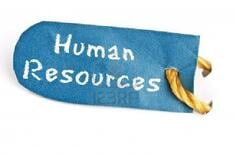
There have been volumes written about cover letters, but has anyone really addressed the following crucial question and what to do about it?
WHO READS IT?
That's right, how you write the letter should depend on who's going to read it first. Take this example. A company is hiring for a CIO, and HR has been given the job description and requirements for screening purposes. Since candidates are not screened by the hiring authority (in this case the CEO or the CFO), but rather by HR, your initial and arguably most important audience is an HR person.
And do you think the head of HR will be doing the screening of resumes and cover letters? In any company with more than one HR staffperson, the top authority will probably not be the one making the decision to escalate the candidate to the next level.
So your future with that company most likely rests in the hands a relatively junior HR staffperson. Will they be sophisticated enough about technology and senior technology roles to interpret your resume and cover letter in light of the job requisition? We can assume that your resume has already passed the keyword electronic screen. So what can you do to help your candidacy make it to the next stage?
With your initial audience in mind, here are five things you can do in your cover letter to get past that initial human screen, a very human being whose training is not in your field of expertise.
1. WRITE your cover letter in easy-to-understand terms, avoiding too many multisyllabic words, complex sentence structure, highly abstract concepts, or technical jargon that is not among the keywords for the job.
2.ENGAGE the reader's emotions. Be human. Let the person know that you like the company and what they do. Say why you are interested in the company. Adopt a warm tone. Infusing this warmth into your writing will help you at this level and won't hurt as your candidacy goes up the ranks to the top hiring authority.
3. IMPRINT a memory in their mind of you by making a connection through story. Try a quick paragraph story that talks about a challenge you faced, what you did, and how it turned out. Indicate why it is relevant to the job at hand. Stories are remembered far longer than facts, and a person's suitability for a job can be best demonstrated to an unsophisticated audience (or even a sophisticated one) through story.
4. MATCH your background to the requirements in a way that's easy to grasp visually by a non-techie. Consider using a 2-column format with the requirements on the left and your match on the right. I suggest you place this visual after your closure (after "Sincerely, Your Name"), so that the human connection can be made first. Or include a 2nd page addendum with the column matches.
5. HELP the HR screener help you, by stating specifically what you want: an opportunity to speak with the hiring authority about the value you could bring to the company. Thank them for their time.
Observe the usual courtesies in writing a cover letter. Address it to the person whose name is given in the job ad. But hold in awareness the likelihood of someone less senior reading it first.
Newspapers are written to be read for someone at the 5th grade reading level. Ads also are written for a basic reading level as well. Leave the complex, sophisticated content in the resume, but let your cover letter be your wedge in the door to advance your candidacy.


